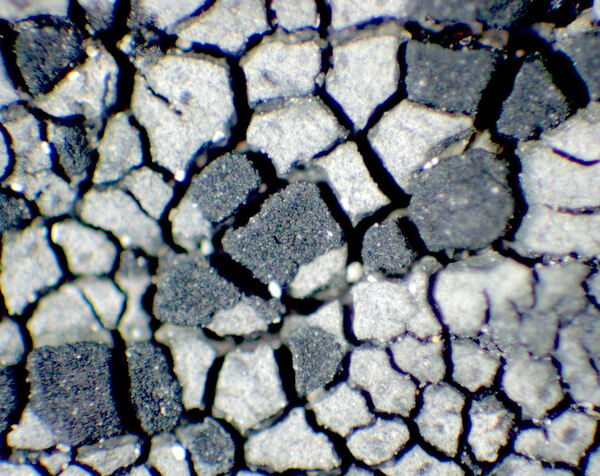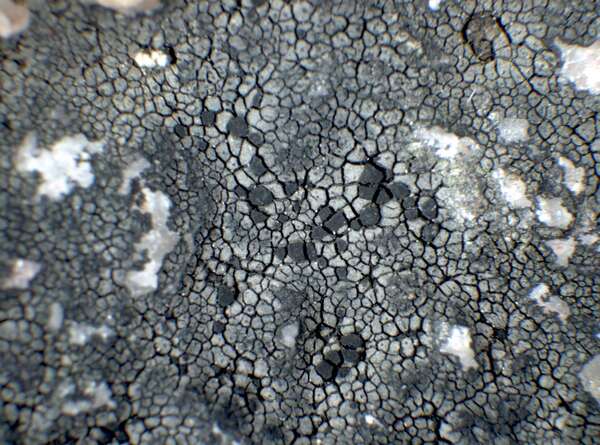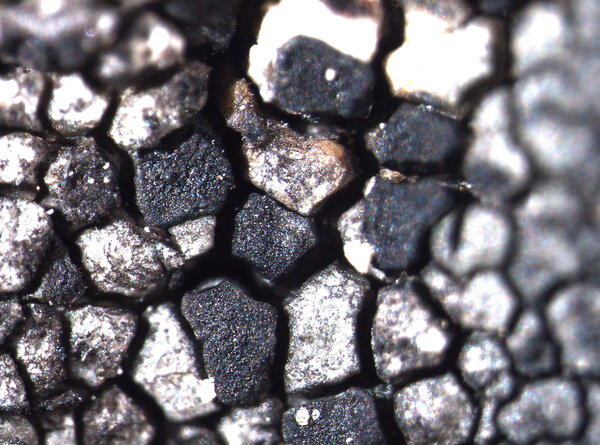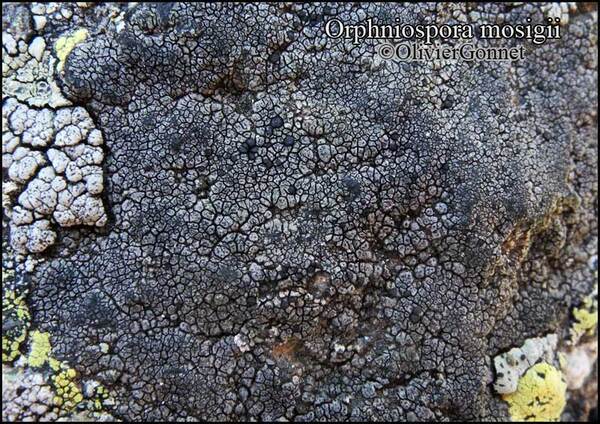Orphniospora mosigii (Körb.) Hertel & Rambold
Mitt. bot. Staatss. München, 27: 122, 1988. Basionym: Lecidella mosigii Körb. - Parerga Lichenol.: 201, 1861.
Synonyms: Aspicilia obscurissima (Nyl.) Maheu & A. Gillet; Lecidea mosigii (Körb.) Anzi; Lecidea obscurissima (Nyl.) Nyl.; Lecidea tenebrosa var. obscurissima Nyl.
Distribution: N - Frl (Tretiach & Hafellner 2000), Ven (Caniglia & al. 1999, Nascimbene & Caniglia 2000, Hertel & Schuhwerk 2010), TAA (Caniglia & al. 2002, Hertel & Schuhwerk 2010, Nascimbene & al. 2022), Lomb, Piem (Morisi & Sereno 1995, Isocrono & al. 2004, Isocrono & Piervittori 2008, Favero-Longo & al. 2015), VA (Borlandelli & al. 1996, Piervittori & Isocrono 1997, 1999, Piervittori & al. 2001, Watson 2014), Emil (Fariselli & al. 2020).
Description: Thallus crustose, episubstratic, rimose-areolate, 0.1-0.2 mm thick, consisting of 0.2-0.5(-0.8) mm wide, dark grey, flat, usually angular areoles developing on a black hypothallus, often delimited by a black prothallus. Cortex c. 10 µm thick, dirty grey in upper part, overlain by a c. 10 µm thick epinecral layer; medulla white to brown in lower part, I-. Apothecia lecideine, black, rounded to most often angular or irregular in outline, 0.3-0.7(-1.2) mm across, at first immersed, later slightly protruding, with a flat to finally convex, more or less rugose disc and a thin, persistent proper margin. Proper exciple grey-brown, green-grey or dark grey in outer part, pale grey-brown within; epithecium dark green or greenish brown, 15-25 µm high, N+ purple; hymenium colourless or pale green in upper part, 50-65 µm high, I+ blue; paraphyses mostly simple, almost not anastomosing, strongly coherent, c. 2 µm thick at mid-level, the apical cells 3-4 µm wide, without a dark cap; hypothecium brown to dark brown, 200(-400) µm high. Asci 8-spored, clavate, tapering at apex into a narrow apical dome, not or weakly I+ blue but ascus apex surmounted with a strongly K/I+ blue cap. Ascospores 1-celled, hyaline, broadly ellipsoid to subglobose, (7-)9-12(-15) x (4-)6-8(-10) µm, thick-walled. Pycnidia black, immersed. Conidia ellipsoid-oblong, 3.5-4 x c. 1 µm. Photobiont chlorococcoid, the cells 10-13 µm wide. Spot tests: cortex and medulla K-, C-, KC-, P-, UV-. Chemistry: without lichen substances.Note: on steeply inclined, often rain-sheltered surfaces of wind-exposed, hard siliceous rocks in upland areas.
Growth form: Crustose
Substrata: rocks
Photobiont: green algae other than Trentepohlia
Reproductive strategy: mainly sexual
In underhangs rarely wetted by rain
Commonnes-rarity: (info)
Alpine belt: rather common
Subalpine belt: rare
Oromediterranean belt: absent
Montane belt: absent
Submediterranean belt: absent
Padanian area: absent
Humid submediterranean belt: absent
Humid mediterranean belt: absent
Dry mediterranean belt: absent
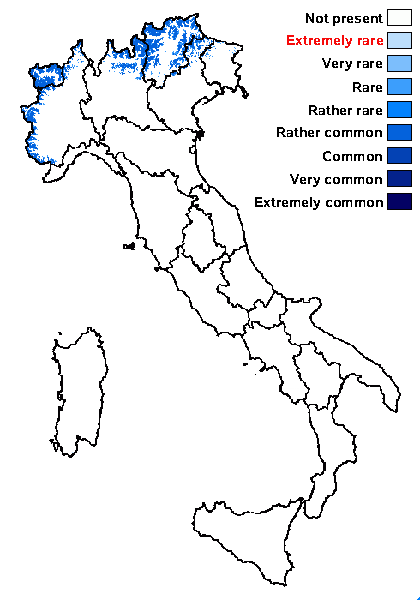
Predictive model
Herbarium samples
Growth form: Crustose
Substrata: rocks
Photobiont: green algae other than Trentepohlia
Reproductive strategy: mainly sexual
In underhangs rarely wetted by rain
Commonnes-rarity: (info)
Alpine belt: rather common
Subalpine belt: rare
Oromediterranean belt: absent
Montane belt: absent
Submediterranean belt: absent
Padanian area: absent
Humid submediterranean belt: absent
Humid mediterranean belt: absent
Dry mediterranean belt: absent

Predictive model
| Herbarium samples |
 INDEX FUNGORUM
INDEX FUNGORUM
 GBIF
GBIF
 DOLICHENS
DOLICHENS
